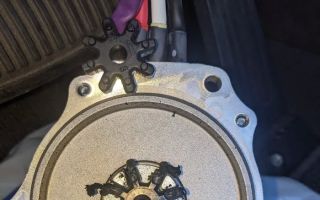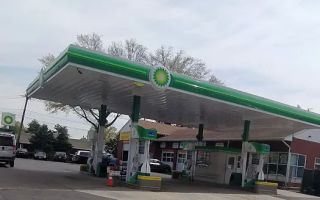How Can I Tell If My Jump Starter Is Fully Charged? A Comprehensive Guide for Drivers
- Understanding Your Jump Starter and Its Function
- Why It's Important to Know If Your Jump Starter Is Fully Charged
- How to Check If Your Jump Starter Is Fully Charged
- Common Mistakes When Using Jump Starters
- Real-Life Examples of Jump Starter Usage
- Why Choose Rescue & Towing for Your Roadside Assistance Needs
1. Understanding Your Jump Starter and Its Function
A jump starter is a portable device designed to start a car that has a dead or drained battery. It’s an essential tool for drivers, especially in emergencies when you’re stranded with a non-working car battery. Jump starters work by providing a surge of power directly to your car’s battery to get it running again, allowing you to drive to a nearby mechanic or get the vehicle properly charged.
These devices come in various sizes and types, ranging from small, lightweight models for basic car batteries to more powerful units capable of starting trucks or SUVs. Some jump starters also include additional features like USB ports for charging electronics or built-in flashlights for nighttime use. Understanding the type and capacity of your jump starter can help you determine its effectiveness in different situations.
2. Why It's Important to Know If Your Jump Starter Is Fully Charged
Knowing whether your jump starter is fully charged is crucial, especially when you're relying on it in an emergency situation. A dead jump starter won’t be able to help when your car battery dies, potentially leaving you stranded in a stressful or even dangerous situation. Regularly checking your jump starter’s charge ensures that it will function properly when needed most.
Moreover, keeping your jump starter charged not only guarantees that it’s ready for use but also extends its lifespan. A fully charged jump starter is more efficient and provides the optimal amount of power to start your car, while a partially charged unit may not have the strength to jump-start your battery effectively.
3. How to Check If Your Jump Starter Is Fully Charged
There are several ways to check if your jump starter is fully charged. Here's a breakdown of common methods:
- Indicator Lights: Many jump starters are equipped with indicator lights that show the current charge level. Green lights typically indicate a full charge, while red or orange lights indicate that the unit needs recharging.
- Digital Display: Some jump starters come with digital displays that show the exact battery percentage. This is the most accurate way to know how much charge is left in your unit.
- Voltage Tester: If your jump starter doesn’t have an indicator light or digital display, you can use a multimeter or voltage tester to check the voltage of the unit’s battery. A voltage of around 12.6 volts is typically considered a full charge for most models.
- Manufacturer's Instructions: Refer to the user manual or the manufacturer’s guidelines for specific instructions on how to check the charge level for your particular model. Some units might have additional methods or specific ranges that indicate full charge.
It’s a good idea to check the charge of your jump starter regularly, especially before long trips, or when it hasn’t been used for a while. Keeping it charged ensures you won’t be caught off guard when you need it most.
4. Common Mistakes When Using Jump Starters
Using a jump starter incorrectly can result in damage to both your vehicle and the jump starter itself. Here are some common mistakes to avoid:
- Not Reading the Instructions: Each jump starter has specific instructions on how to connect it to your vehicle. Failing to read and follow these instructions can cause the unit to fail or even result in electrical damage to your car.
- Incorrectly Connecting the Cables: Always connect the positive cable (red) to the positive terminal of the battery and the negative cable (black) to a grounded, metal part of the car’s frame. Incorrect connections can lead to sparks or cause the unit to short-circuit.
- Not Checking the Battery Condition: A jump starter only works if the battery has some charge left. If the battery is completely dead, the jump starter may not be able to provide enough power to start the vehicle.
- Overusing the Jump Starter: Jump starters are designed for temporary use. Using them repeatedly without allowing the unit to recharge properly can reduce its effectiveness and lifespan.
Being mindful of these common mistakes can help you avoid mishaps and ensure your jump starter performs at its best when you need it most.
5. Real-Life Examples of Jump Starter Usage
Consider the case of Emily, who found herself stuck at a gas station on a busy highway after her car battery died. She had her jump starter in her trunk but wasn’t sure whether it was fully charged. She checked the indicator light, which showed that the unit was at full charge, and she was able to jump-start her car in a matter of minutes, getting back on the road without delay.
On the other hand, John didn’t check his jump starter’s charge before heading out on a road trip. When his battery died in a remote area, he found that his jump starter was not charged enough to start his car. He had to call for roadside assistance, costing him valuable time and money. This experience taught him the importance of regularly checking his jump starter’s charge before embarking on long drives.
These stories highlight how a simple step—checking your jump starter’s charge—can save you from unnecessary frustration and potential costs.
6. Why Choose Rescue & Towing for Your Roadside Assistance Needs
If you find yourself in a situation where your jump starter is not enough or you simply don’t have one, Rescue & Towing is ready to help. Whether it’s a flat battery, tire change, or other emergency, their team provides fast, reliable roadside assistance at affordable prices.
With 24/7 availability and a commitment to excellent customer service, Rescue & Towing is the go-to choice for all your roadside assistance needs. Don’t wait until you’re stranded—check out their services and be prepared for any roadside emergency.


























